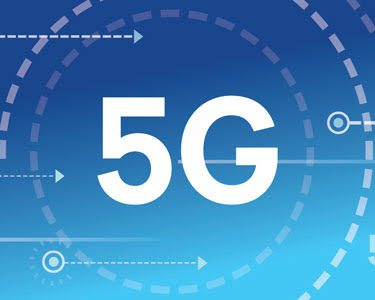“Are we there yet?” It’s a familiar refrain for anyone who’s ever had the pleasure of taking a family road trip. Excitement, suspense, impatience, expectation—all packed into four little words.
As we approach 5G deployment and the commercialization of 5G use cases like autonomous driving, it’s hard not to see the parallels. For many, even the most experienced of us, anticipation is mounting, as the wondrous capabilities of 5G near actualization – enabling the fully connected, mobile intelligent society.
Reaching our destination will require tight ecosystem collaboration, interdisciplinary connections, rapid innovation, and agile iteration across the industry on universal standards; new radio specifications; network transformation requirements; harmonized spectral ranges, and viable reference designs for field trials and testing. And, as our CEO says, “data is the new oil,” that will power our forward momentum.
In March I had the opportunity to explore some of the milestones Intel is driving during a plenary entitled, “5G Moving Towards Deployment” at the IEEE WCNC ’17 conference in San Francisco:
Universal standards
Intel participates in more than 250 standards and industry groups worldwide, with leading positions in the 3GPP and IEEE, as well as active participation in the International Telecommunications Union (ITU). Through leadership in standard-setting organizations—Intel is working to address the needs of customers the world over, delivering technical advancements and bringing interoperable solutions to market that will enable the next generation of wireless connectivity in globally-harmonized spectral ranges.
At Mobile World Congress 2017’s Global Test Summit, Intel, AT&T, China Mobile, NTT DOCOMO, Vodafone, Ericsson, Huawei, Keysight, Nokia, Qualcomm, R&S, and ZTE announced a joint commitment to promote a unified 3GPP standard for a global 5G ecosystem via testing, trials, and cooperation. Together, we’re working on completing a high-quality and competitive 5G specification by June 2018 for 3GPP Rel-15 and by December 2019 for Rel-16, built with forward compatibility in mind.
Meeting 5G requirements will require both sub 6 GHz and mmWave bands for multi-Gbps throughout, hundreds of MHz aggregated bandwidth, and ultra-low latency will necessitate radio access to wide bandwidth in the 28 GHz and mmWave spectral ranges.
Network transformation
5G will see explosive growth in the number of connected devices and demands on the network—as more than 50 billion smart devices and “things” are enabled with communications capabilities and computing power. Supporting these devices, as well as the needs of other usage scenarios, will require a network transformation of massive scale. Purpose-built networks must become software-defined, virtualized and heterogeneous.
Intel is powering the cloud-ready network, facilitating the fast deployment of SDN and NFV solutions and services via the Intel® Open Network Platform. Intel architecture-based components are enabling communications service providers to prepare their networks for 5G solutions and services, while simultaneously future-proofing their investments—replacing fixed-function appliances with virtualized workflows built on open standards, both in the radio and core network. Additionally, teams within Intel are teaming up in a new NFV Laboratory Initiative to assist operators with the transition to virtualized environments and accelerate the delivery of business value.
Spectral harmonization
Shifting from a paradigm focused almost exclusively on mobile broadband to one designed to bring both seamless connectivity and massive computing power to each thing, person, and use case will require the industry to explore new ways of utilizing spectrum. This means developing new standards that optimize the use of licensed and licensed shared bands while also operationalizing unlicensed bands to meet the unique needs of IoT, eMBB, and URLLC applications.
Accelerating the delivery of 5G products and services depends on harmonizing spectrum frequency ranges across leading geographies to achieve economies of scale for both manufacturers and operators. The industry must align around sub-1 GHz spectrum for Low Power Wide Area (LPWA) use cases like IoT; sub-6 GHz for mobile broadband coverage and capacity; and 28 GHz+ mmWave ranges for bandwidth-intensive applications, including virtual reality.
Field trials and testing
Of course, the launch of 5G commercial solutions is completely dependent on our ability to rapidly test and iterate on all the above—emerging standards, radio technologies, and network capabilities—in field trials. It was barely over a year ago that we were announcing the 1st Generation Intel Mobile Trial Platform at MWC 2016. This year, we announced the 3rd Generation of the platform, as well as a host of advancements achieved with its support—including the launch of the Intel GO Automotive 5G Platform, featuring 4G LTE and 5G 28 GHz operation for V2V and V2E connectivity.
Intel’s Mobile Trial Platform is also behind two exciting new fixed access trials with Nokia and AT&T, which are predicted to accelerate the commercial availability of mmWave-capable 5G solutions.
This week, I had the opportunity to cover these topics in more depth at the IEEE’s Wireless Networking and Communications Conference in San Francisco, where we had a focused conversation on the importance of fostering diversity and inclusion in communications engineering.
As we near the arrival of 5G, I am filled with anticipation and excitement, not just about the prospects of 5G, but at the opportunity to take this journey with a strong, powerful, and diverse team, at a company committed to inclusion. Recently, Intel set an ambitious goal to be the first high-tech company to reach full representation of women and underrepresented minorities in our U.S. workforce by 2020. And the company committed $300M to support this goal—not just at Intel, but across the technology industry.
Intel believes that we succeed, together. From our internal teams to the partnerships we choose, to the change we drive in the industry and in the world—success is a destination we reach together. And I’m excited to get “there,” with Intel, and with all of you.
Are we there yet?

